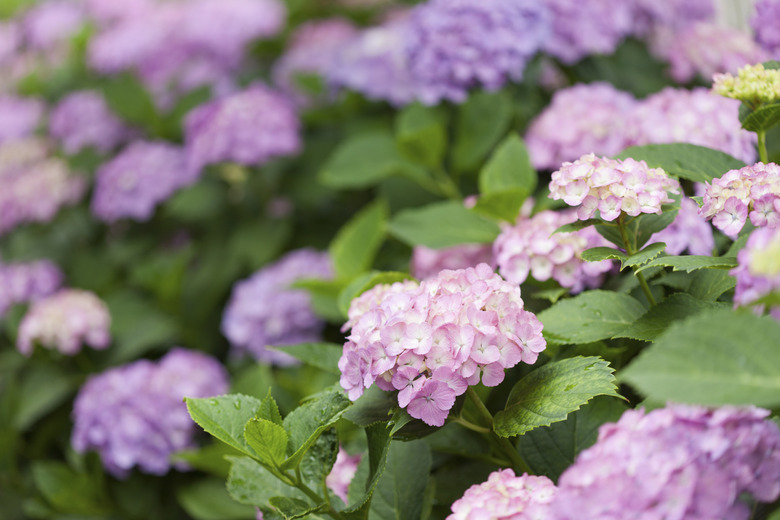How To Split Hydrangea Plants
Sometimes, divide and conquer is the best way to deal with unruly established hydrangeas (Hydrangea spp.) or those that you planted in too tight a spot. You can use the same technique recommended for dividing most perennials — digging up the plant at the most auspicious moment and dividing the root clump into two or more plants.
Hefty Hydrangeas
You thought your kids grew fast — that small hydrangea pot you purchase today at the garden store won't waste any time in expanding, if you provide well-drained soil, partial sun and sufficient irrigation. A clump of hydrangeas 10 feet tall and with an even larger width is not unusual, and these plants grow fast in U.S. Department of Agriculture plant hardiness zones 4 through 11, depending on species. If your established plant outgrows its space, it may be time to split the baby.
Dividing a Hydrangea
The trickiest part about dividing hydrangeas is to figure out the ideal time. Many tout spring as the perfect moment, just after the plant leaves dormancy and fine weather is just around the corner. But according to experts at Perennials.com, the only perennials that should be divided in spring are those that flower after mid-June. Those that flower before mid-June do best when divided in the fall, just before dormancy. With hydrangeas, the time the shrub flowers depends on the species and cultivar.
What Flowers When
Five types of hydrangeas are cultivated in the United States, and the most popular species is the well-known bigleaf (Hydrangea macrophylla) that thrives in USDA zones 5 through 11. Bigleaf, as well as several other hydrangea species, begins blooming in midsummer and carries on through August or September, depending on cultivar and climate. These hydrangeas should be divided in the spring. If your hydrangea blooms before mid-June, you should divide in late fall.
Long Division
If you're dividing your hydrangea in spring, wait until you see an inch or two of new shoots, and then dig up the clump. Using a narrow, long spade — termed a rabbiting spade — dig a deep circle around the clump, and then pry the root ball out of the ground and set it on a tarp. Knock or wash off loose soil. Cut the clump into two or more pieces with a clean, sterilized garden knife, trying to find a natural point of separation if possible. Cut each of these pieces into sections again if the size of the clump merits it. Each section should have both green shoots above and roots below.
Replanting the Pieces
Replant the sections immediately in moist, well-drained soil in a location that gets afternoon sun. If you have a bigleaf hydrangea, remember that the flowers will turn blue in acidic soil and pink in alkaline soil. Plant each piece at about the same depth as it was growing. Water the area well after planting, and add a 2- to 3-inch layer of organic compost over the root area, keeping it a few inches from the hydrangea stem.
